Region's role in the WW2 battle for the skies
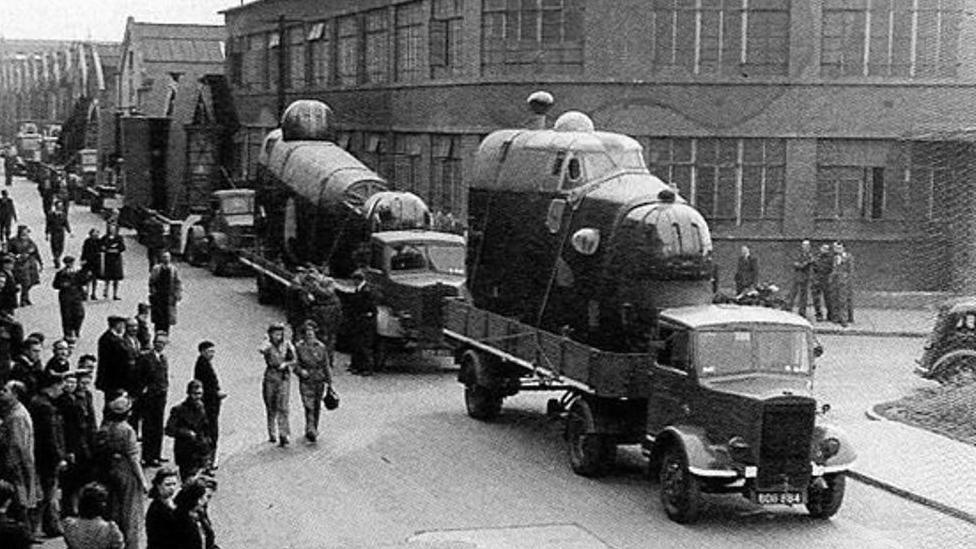
Handley Page Halifax bombers were transported to Ringway Airport for assembly during WW2
- Published
During World War Two, Greater Manchester was a hive of activity building planes that played a vital role in the war effort.
And the factories - and people who worked in them - were a target for German bombers.
Joe Jervis, now 102, began working as an apprentice fitter at the Fairey Aviation works at Heaton Chapel in Stockport in 1937, when he was 14.
He said he remembered a time when "German planes raided Fairey's but they missed by a few yards and they hit the back of the McVitie's biscuit works".
"People stayed calm and we continued to make planes for our aircraft carriers," he said.
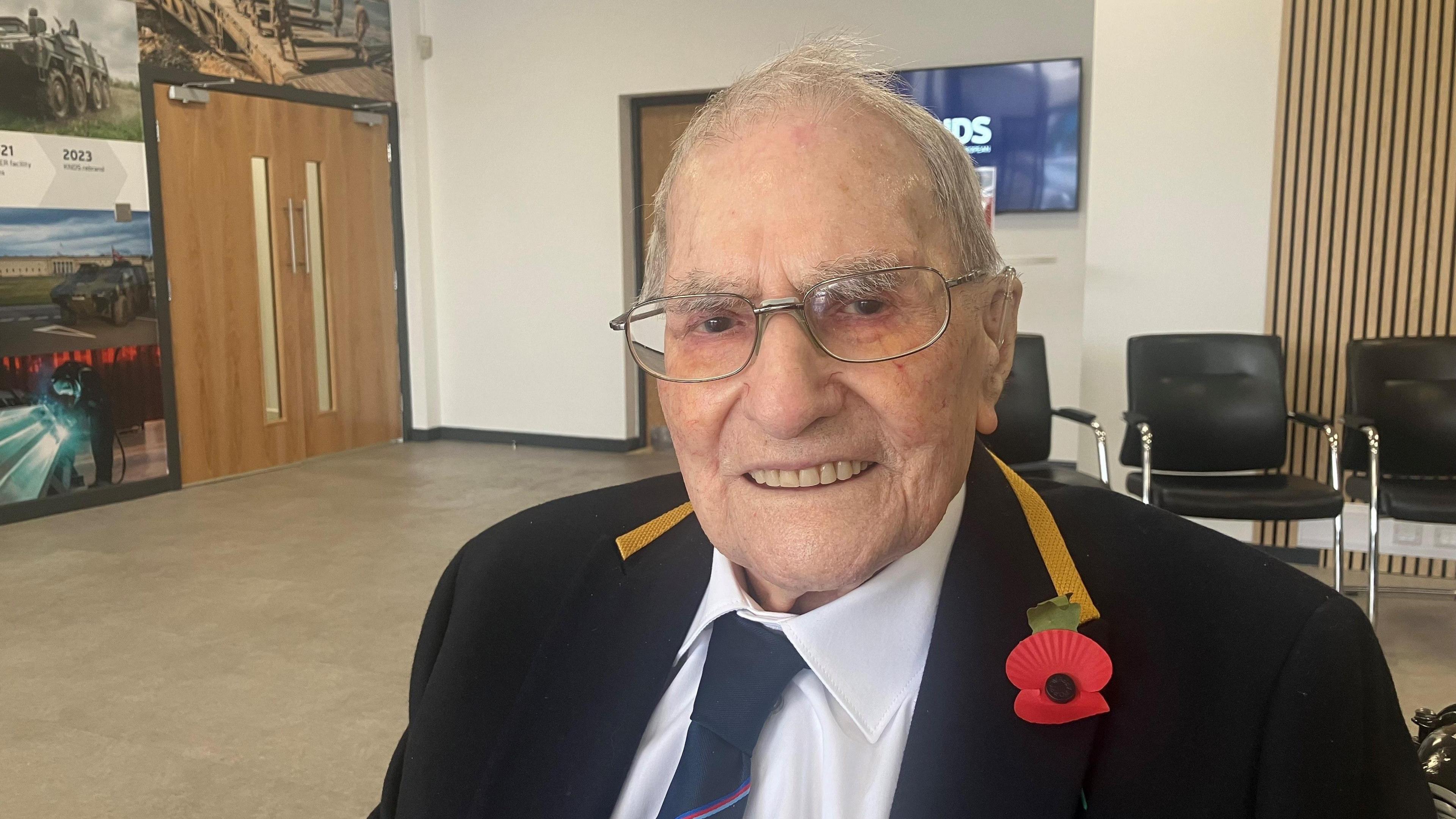
Joe Jervis began work at the Fairey Aviation factory at Heaton Chapel in 1937
The munitions factory at Heaton Chapel, which opened in 1917, made hundreds of bombers for the Royal Air Force during the First World War.
The site was acquired by Fairey Aviation in 1934 and five years later it was visited by King George VI, who inspected the planes on the eve of the Second World War.
Thousands of people worked at the factory during the war, making hundreds of planes like the Fairey Battle, the Fairey Barracuda and the Handley Page Halifax.
Planes were transported from Heaton Chapel and were assembled at the nearby RAF Ringway, which became Manchester Airport in 1957.
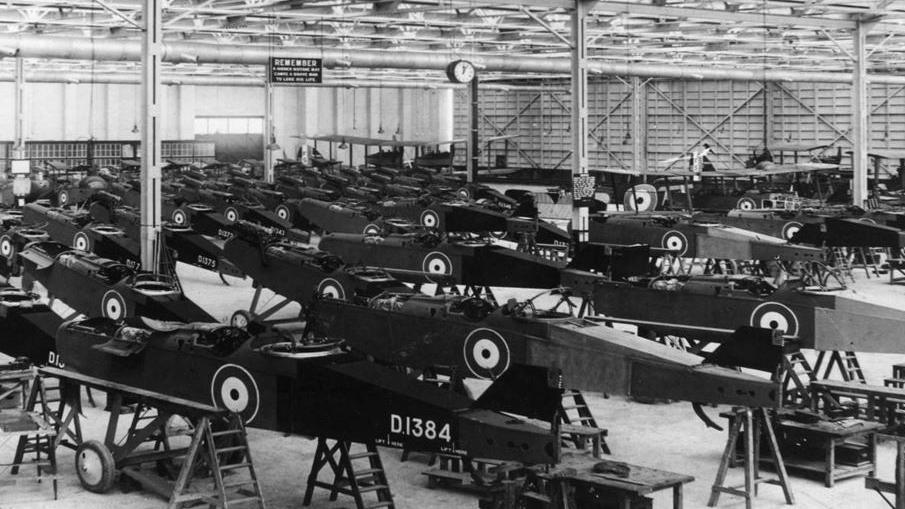
Biplanes were made at the Heaton Chapel factory during the First World War
Roy Clarke, who began work as an apprentice at Fairey Aviation in 1950, said he remembers growing up on a farm at Styal, close to Ringway Aerodrome.
The 90 year-old said: "I watched the planes being assembled at Ringway as a schoolboy and the farm where I was born is underneath the second runway now.
"I remember the tarpaulins at Manchester Cathedral after a bombing raid and I thought Herr Hitler can't possibly win because he's offended the Lord."
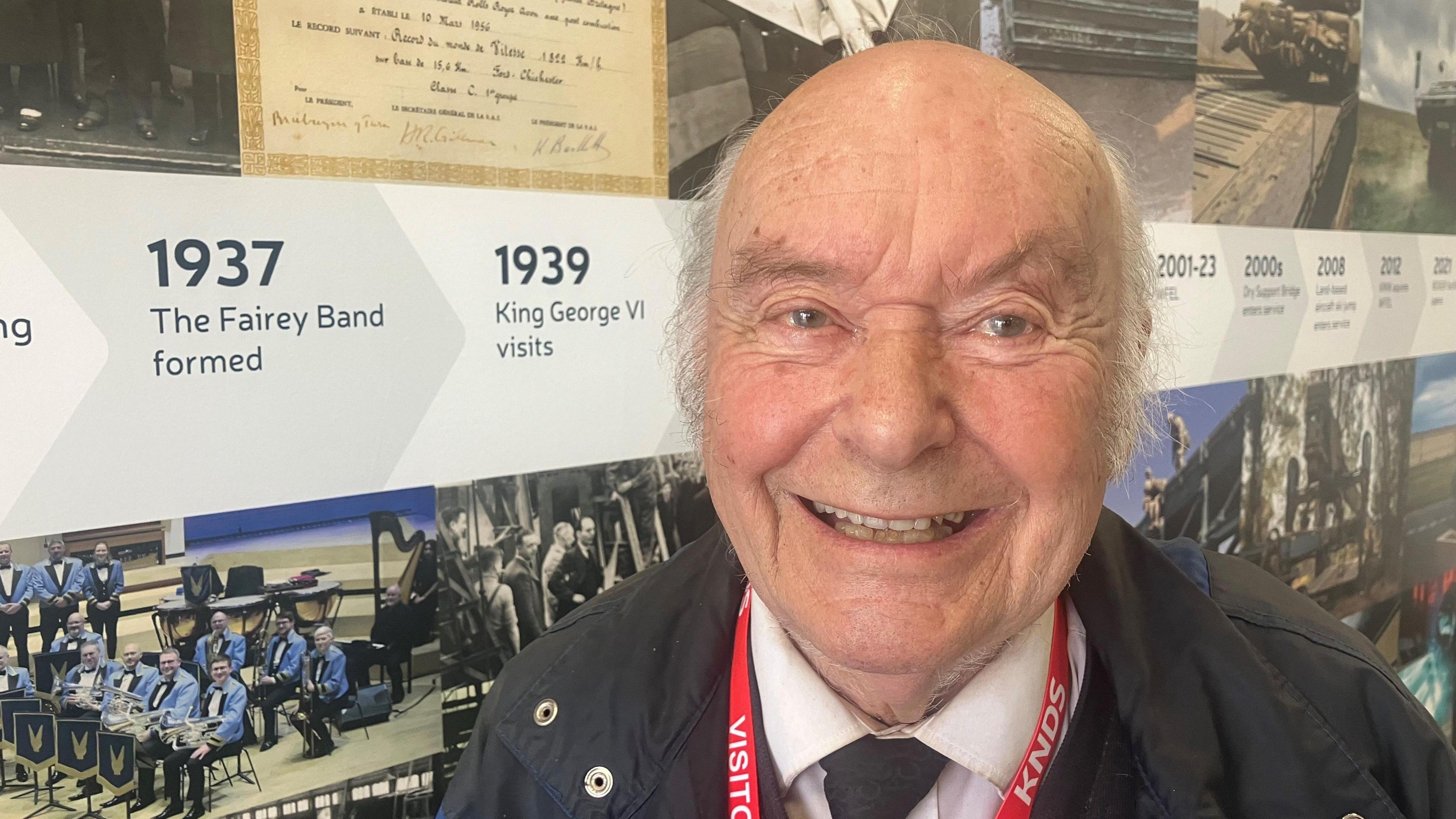
Roy Clarke began work as an apprentice at Fairey Aviation in 1950
Several aircraft factories across Greater Manchester employed tens of thousands of people during the Second World War.
Aeroplane propellers were made by De Havilland at Lostock in Bolton, Rolls Royce engines were made at Trafford Park, while Lancaster bombers were made by Avro at Chadderton, then assembled at Woodford in Stockport.
There were also component factories in Hyde, Parrs Wood and Reddish.
Many of the aeroplanes used RAF Burtonwood near Warrington, which was the largest military airbase in the UK during World War Two.
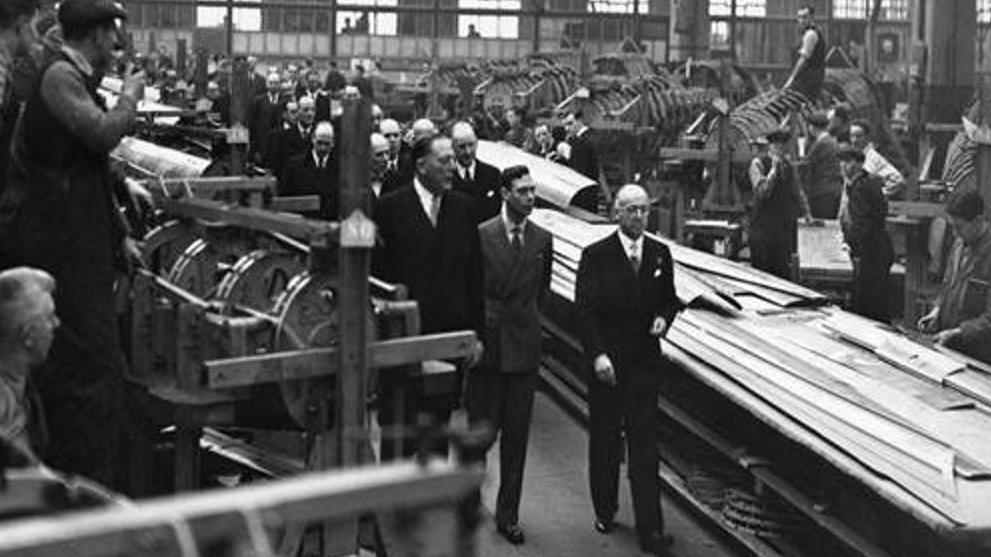
King George VI visited the Fairey Aviation factory at Heaton Chapel in 1939
Frank Pleszak, 67, an aviation historian from Marple Bridge in Stockport, said: "The war effort around Greater Manchester was so significant and there is a huge legacy.
"Everybody thinks about Avro being the main local aviation company but Fairey's employed about 24,000 people in Greater Manchester during the war."
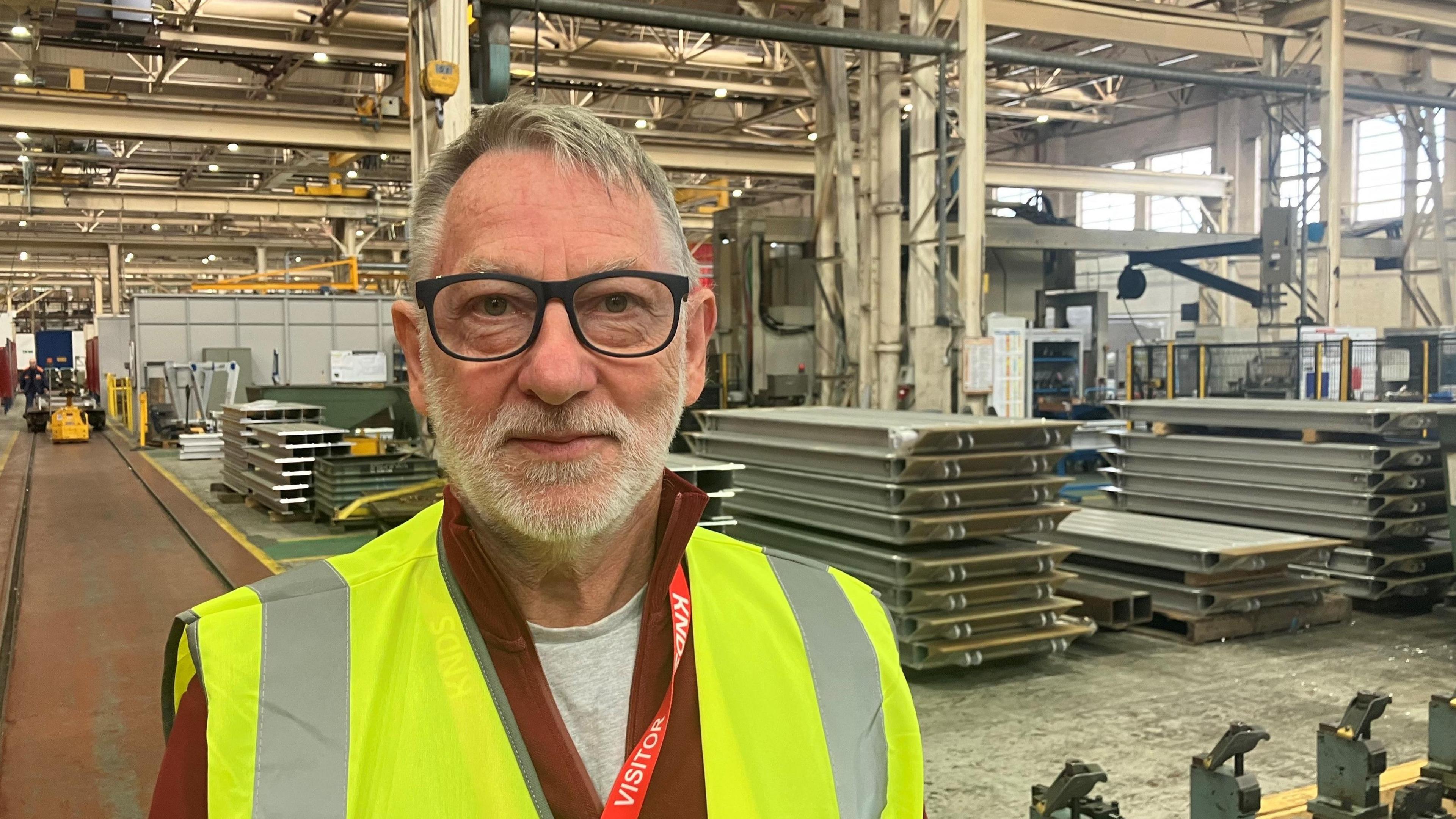
Frank Pleszak is an aviation historian from Marple Bridge in Stockport
The Fairey Aviation factory later began producing military bridges and the company is now owned by the European defence giant KNDS.
Around 450 people now work at the factory in Heaton Chapel, where they also have a contract to help produce Boxer armoured vehicles for the British Army.
A concert to mark VJ Day, featuring the KNDS Fairey Aviation Brass Band, is taking place at the Romiley Forum Theatre in Stockport on Sunday 17 August.
Get in touch
Tell us which stories we should cover on Merseyside
Listen to the best of BBC Radio Manchester on Sounds and follow BBC Manchester on Facebook, external, X, external, and Instagram, external. You can also send story ideas via Whatsapp to 0808 100 223